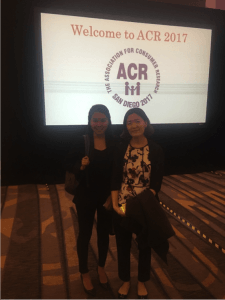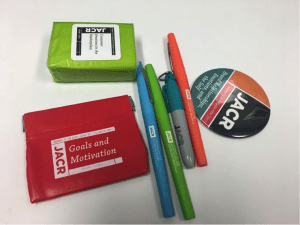This October, TAI Assistant Professor Dr. Eunjin (Anna) Kim traveled to San Diego to attend the 2017 Association for Consumer Research (ACR) Conference, a premier marketing conference. She presented a paper titled, “Narrative Advertising Effectiveness: The Role of Ad Relevance, Ad Vividness, and Ad Message Explicitness.”
“This project departed from a basic premise, such that it is highly unlikely that all narrative ads produce equal amount of effectiveness (e.g., positive affective responses and positive cognitive responses),” Dr. Kim said. “Nowadays, advertising plays in a very competitive attention economy where consumers’ attention span is very short like that of gold fish. Storytelling has emerged as a new currency for capturing customer hearts. Marketers and researchers have been trying to understand the power of the storytelling in order to move their customers through their branding/sales objectives. I believe my research makes a significant contribution to the topic of narrative advertising effectiveness.”
Dr. Kim has two co-authors on this project, Dr. Sidharth Muralidharan, TAI Assistant Professor, and Dr. Eunseon Kwon, Assistant Professor of Strategic Communication at Texas Christian University. A paper based on this project is currently under review at Journal of Business Research, a premier academic journal.
“I really liked this conference because it offered me an excellent opportunity to showcase my research and to meet other seasoned scholars in my research area,” Dr. Kim said. “This conference has recently started to publish the Journal of the Association for Consumer Research (JACR) exploring consumer behavior topics with a thematic approach. I got some cute gifts from the journal at the conference. At the end of the conference, we visited San Diego Air & Space Museum.”
Dr. Kim has published her research in the Journal of Advertising, Marketing Letters, Psychology and Marketing, International Journal of Advertising, Cyberpsychology, Behavior, and Social Networking, Mobile Media & Communication and others. She teaches Digital Media Strategy 1, Consumer Insight and Persuasion, Strategic Brand Management 2, and Media Measurements and Metrics.
TAI Faculty are among the most productive advertising scholars worldwide. Their research interests span current industry topics of interest, including narrative advertising effectiveness, humor advertising, socially responsible advertising, and virtual product experiences, to name a few.
Below are pictures from Dr. Kim’s time in San Diego.















